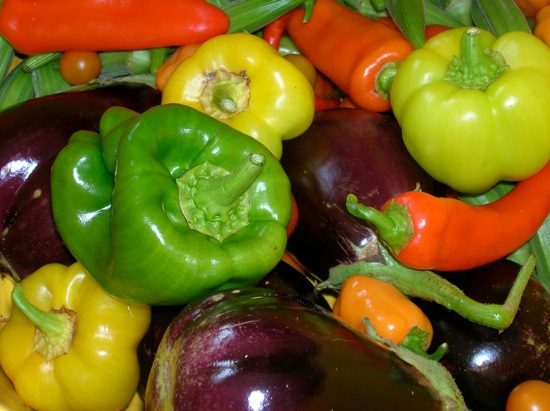Building an oasis in the desert

Is it possible to build an oasis in the desert? Not the desert that brings to mind scorched earth and stretches of hot sand miles away from water and civilization. No. The question speaks to deserts that exist in urban centers across our country. Neighborhoods in the very heart of our otherwise thriving cities where the USDA’s daily recommendation of 3-5 servings of fruits and vegetables cannot be found for several miles around. These areas are not simply isolated instances of deprivation. They are signs of a national crisis.
If we live in more prosperous parts of town, we may think “food deserts” do not exist. And certainly, our awareness of inequities within the food system is greatly diminished when we can access any part of that system due to our geographic proximity and socio-economic status. However, public health statistics depict a very different world than the one we may have created for ourselves in the comfort of our suburban utopias, chock full of Trader Joe’s and Whole Foods options. When obesity and diabetes rates in food deserts are double those found in the suburbs, and children who live in those communities suffer from adult diseases, these are signs of a real and persistent threat to our nation’s public health. The evidence is clear that people who live in communities that lack access to nutritionally dense food products are more likely to die prematurely from diet related diseases.
Having trouble viewing this video? Click here to view it on Vimeo.com.
It’s even more alarming when we witness the compounding effects seen generationally when children are born into families who live in neighborhoods with only fast and fringe food options available to them. Basically, geographic access to nutritious food is a key determinant to health outcomes. However, if you don’t have access to healthy foods, then you can’t very well choose them. To be clear, the issue is more complex than simply locating more grocery stores in urban areas. Food deserts are a symptom of a broken food system that is both imbalanced and overextended. If we care about public health and the financial consequences seen in our local and national infrastructures, we must develop viable options to address the needs of a significant portion of the population who subsist in food deserts. Grocery chains alone are not the answer, as they cannot adequately reverse the effects of the damage done by their absence to this point. What’s more, the rise of industrialized agriculture has transformed farms into industrial feedlots and provided unfettered access to cheap and highly processed foods in our grocery aisles, contributing to the severe health crisis already present in food deserts.
So the answer to the question is, yes. An oasis can be built in the desert, but building it can only begin when we start to address issues of urban land use and promote local solutions to ease increasing doubts about the safety and sustainability of our food system. Quite simply, it can be built by increasing local agricultural production in food deserts through individual and community gardens and Community Supported Agriculture programs (CSAs). The real value in building these kinds of oases is not only in providing nutritional access, but also in aiding the restoration of a sustainable food economy that respects all people and the land on which our very sustenance depends. The momentum echoing this sentiment can be felt around the country in communities impacted by the issue of urban food deserts and with individuals who are concerned about the hazards of our centralized food system. On a local level there are several policy oriented and community directed initiatives dedicated to the building of these oases.
Having trouble viewing this video? Click here to view it on Vimeo.com.One such organization is Sow Much Good, a local non-profit, based in Huntersville, whose mission is to eradicate food inequalities resulting in health disparities among marginalized and underserved populations. With a core belief that all people have a “right” to healthy foods despite socio-economic status, the organization is committed to promoting and supporting the concepts of local, sustainable agriculture through charitable and community gardening. With an emphasis on educating individuals about the benefits of growing food for themselves – fruits, vegetables, grains and herbs in personal, community-based and charitable gardens – Sow Much Good helps underserved communities to make the connection between the concepts of personal nutrition, food security, dietary habits and overall health.
As in other communities, when individuals in food deserts are provided access to food options that provide optimal nutritional density, the result produced will benefit ALL communities. It will not only promote social justice and food equality, but it will also enhance the quality of our collective public health outcomes, our local food economies and our environment. With approximately 72,000 people in our immediate area alone living in food deserts, the challenge can seem quite daunting. However, while the need is great and the issues complex, there is a shared and universal recognition that change can only be orchestrated through sustained and committed action on a global, national, regional, local and individual scale. Sow Much Good has begun the work of building these oases to address the urgent need in our region. What will you do to help in eliminating these barren landmasses in the heart of our urban centers?
Views expressed in this commentary are entirely those of the author(s) and do not necessarily represent the views of the UNC Charlotte Urban Institute, its staff, or the University of North Carolina at Charlotte.
For more information about Sow Much Good, go to their website at www.sowmuchgood.org.
Robin Emmons is the executive director of Sow Much Good. She can be reached at robin.emmons@sowmuchgood.org.
Photo by Robin Emmons
Robin Emmons
